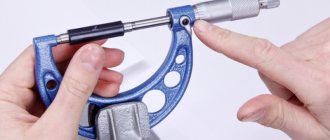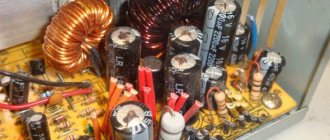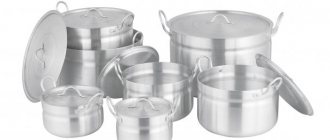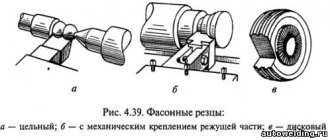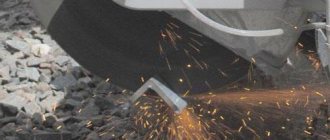Types of levels
Currently, you can find various types of levels on sale, which differ in their characteristics. Depending on the accuracy of such devices, they are usually divided into three categories:
- Technical, the error of which can reach 10 millimeters.
- Accurate - with an error of no more than 2 millimeters.
- Highly accurate - with a permissible error of 0.5 millimeters.
Until the recent past, optical levels were in demand, but today the most popular are measuring instruments that are built on electronic and laser technology.
Laser levels are compact in size, and using such a device does not require any professional skills. Today, such devices are most popular in construction , where they can be used to calculate the horizontality of even small-sized surfaces. Laser models are capable of drawing a luminous, clear line, the presence of which makes it possible to visually establish existing deviations from the horizontal, which greatly simplifies the necessary calculations.
Optical instruments use a special design of numerous lenses, which allows you to build the most accurate image, obtaining data on the horizontal surface. This measuring device is simple in design and easy to use. It consists of the following elements:
- Telescope.
- Stands.
- Round level.
- Tripod or tripod.
Let's look at an example of setting out the height at one of the points.
You, standing behind the device, aim at a staff standing on a benchmark with a known altitude mark. Let's say +148.900. The count on the staff at this point was 1.100, respectively, adding up, we get +150.000 - our Tool Horizon (do not forget that the device must be properly initially leveled and motionless during the work process). Let's say we want to set the elevation H=149.600. By simple calculations, we find the reading that should be on the staff: 150.000–149.600 = 0.400. We inform the assistant about this information and he moves the staff vertically until the reading of 0.400 is in the crosshairs of the level’s grid of threads. We stop the assistant with a confident shout and watch as he fixes the height of the point. When working on the ground, in a field, or at a summer cottage, it is most convenient to use cut reinforcement of a small cross-section as a beacon/benchmark. On it, for example, our elevation mark will be marked with multi-colored tape. It would also be useful to designate our fixed point by wrapping a signal tape around it, or by building something like a pyramid from scrap materials.
With these simple operations we mastered the level! :)
Operating rules
Working with the level is not particularly difficult. We offer you the simplest algorithm for using these measuring instruments, which will allow you, even without any special experience, to obtain the most accurate data and determine even the slightest deviations from the horizontal.
- It is necessary to correctly install the tripod, for which you loosen the fastening screws located on the legs, install the level horizontally on a stationary plane, and the measuring device should be located at chest level. Fasten the screws and fix the legs.
- A telescope is installed on a tripod and secured with a mounting screw.
- The level is brought to a horizontal position, for which three adjustment screws are rotated and the air bubble is placed in the central position on the round screen in the viewfinder.
- The optics are being focused and adjusted. The eyepiece should be adjusted to the operator's vision. To do this, the device is pointed at a large illuminated object, after which, by rotating the ring on the eyepiece, a clear image is achieved.
- To work, you will need two geodetic slats, which can be 3 or 5 meters long. The slats are marked in millimeters on one side and in centimeters on the other. They can be made telescopic from plastic or aluminum and folding from wood.
- Height alignment. The surveying rod is installed as close as possible to the point that needs to be measured and leveled. In the eyepiece it will be possible to observe the center line of the reticle, the data from which is recorded on paper or electronic media. Next, similar measurements are taken with other points, the area along which the alignment will be determined is determined, and based on the calculations obtained, it will be possible to ensure the most accurate and perfectly straight line.
- Centerline alignment will give you the most accurate data possible. It is necessary to choose a place where all the points are visible, through which you need to build a perfectly straight horizontal line. The level is installed in such a way that the nearest point is at least 5 meters away. The measuring rod is placed at the front of the device, and the second measuring rod is installed at the rear. The rear staff will be needed for marking, and the main staff at the front will allow you to calculate the height. The instrument is initially aimed at the rear staff, the values are recorded along the lines, after which the main staff is focused and data is recorded on the red side.
Modern laser and electronic devices can significantly simplify calculations. All information and all data are calculated automatically and then provided to the user in a readable form. Each of us can handle the use of such electronic and laser devices, even if he does not have the relevant work experience.
Levels are fairly easy- to-use devices that allow you to obtain geodetic data and determine the ideal geometry and horizontal plane. The use of such devices is not difficult, especially when used for measuring laser and electronic levels.
So let's assume we have:
- You, with a phone, a calculator, or at worst with a notepad and pencil.
- Optical level (preferably with a compensator, which will greatly facilitate the work process).
- Tripod.
- One or two leveling rods (the pattern on them can be either checkered (black and red stripes) or in the form of a ruler; if the distance to the standing points is short, this is not critical for us).
- An assistant who understands your commands (you can use walkie-talkies to save your vocal cords).
What we need:
In a general sense, any action with a level is a transfer of elevation marks. Using a point with a known height, we determine the instrument horizon (HI) - the height of the instrument’s sighting beam (the horizontal line along which our gaze goes when we look into the instrument) above the conditional “zero”.
GI = the ground mark known to you in advance at a certain point (benchmark, finished floor mark, etc.) + counting on the leveling rod (if anything, both black strokes and red strokes, and the spaces between them on the leveling rod have the same height 1 cm)
If we want to determine a mark at any other point with an unknown height, we place a staff on it (of course, maintaining its vertical position), and subtract the reading on the staff from the horizon value of the instrument. Voila! The altitude is now known to us.
Installing a leveling tripod
When installing the level, it is important to follow a number of rules. Setting up a tripod is of utmost importance. The tripod must stand firmly on the ground. Otherwise, measurements may have unacceptable errors. Also, if the tripod is in an unstable position, there is a risk of it falling along with the device. If the soil is soft, then the ends of the tripod legs need to be pressed into the soil. On slippery surfaces and when there are gusts of wind, it is advisable to use a metal base (in the shape of a triangle). This base has special holes for tripod legs.
When installing a tripod, you should strive to ensure that the position of the platform on which the level will be installed is horizontal. This will allow you to easily install the device in the desired position for operation. The sighting axis of the device must be strictly in the horizontal plane. In this case, you can count on high-quality measurements of excesses and obtaining the required result.
Overview of the TOPCON device
Topcon is a Japanese leader in the production of surveying equipment. All devices can be divided into optical and digital levels.
Digital options provide bright images and accurate measurements. The devices are resistant to vibrations and shocks. They are equipped with a magnetic compensator, which allows measurements to be taken on site where heavy equipment is operating.
Reviews of electronic levels are presented in the table below.
| Parameter | DL-102С.N | DL-101С | DL-502 | DL-503 |
| Accuracy, mm | 0,4 | 0.6 | 1.0 | |
| Lens diameter, mm | 45 | 36 | ||
| Min. sighting distance, m | 1 | 1 | 1,5 | 1,5 |
| Telescope magnification | 30x | 32x | 32x | 28x |
| Weight of assembled device, kg | 2,8 | 2,8 | 2.4 | 2.4 |
| Operating temperatures | -20°C … +50°C | |||
| Working time in hours | 10 | 10 | 16 | 16 |
Review of Sokkia devices
Sokkia electronic levels are professional devices for effectively determining elevations. They are distinguished by proprietary coated optics and high operating speed. All measurements are made automatically and saved in the device memory.
They also use a special Wave-and-Read device stabilization technology. The following features are available in the levels:
- carrying out single measurements;
- carrying out repeated measurements;
- using the rack tracking mode;
- turning on the stabilization mode;
- Calculation of the average value.
Detailed characteristics of the devices are shown in the table below.
| Parameter | SDL50 | SDL30 | SDL1X |
| Increase | 28x | 32x | 32x |
| Accuracy, mm | 1,5 | 1,0 | 0,3 |
| Min. focal length, m | 1,6 | ||
| Operating temperatures | -20°C … +50°C | ||
| Weight of assembled device, kg | 2,4 | 2,4 | 3,7 |
| Measurement time, sec | 3 | 3 | 2,5 |
| Working time in hours | 16 | 8,5 | 9-12 |
Review of Trimble devices
Levels from the American company Trimble are designed to accurately determine the level of elevation and height differences on the ground. The devices have a reinforced body, which allows them to be used in almost any weather.
They are also equipped with many additional functions and spacious internal memory. The display backlight allows you to work even in low light.
The devices are distinguished by long-term operation without recharging, maximum productivity and high accuracy. Measurements are taken automatically using powerful software.
Detailed characteristics of Trimble electronic levels are presented in the table below.
| Parameter | DiNi 03 | DiNi 07 | DiNi 22 | DiNi12T |
| Increase | 32x | 26x | 26x | 32x |
| Accuracy, mm | 0,3 — 1,5 | 0,7 | 0,7 | 0,3 |
| Min. focal length, m | 1,3 | |||
| Lens diameter, mm | 40 | |||
| Weight of assembled device, kg | 3,5 | 3,5 | 3,2 | 3,7 |
| Operating temperatures | -20°C … +50°C | |||
| Working time in hours | 72 | |||
Purchasing levels from a reliable company
The Metronx company offers the purchase of modern high-precision levels of various configurations for all types of work. The presence of additional accessories and technical documents will ensure ease of use of the device. Our store's assortment includes both a budget device with a minimum number of functions and professional levels at a relatively high price.
If you have any difficulties making a choice, you can always contact our managers who will help you buy the best model for you. We deliver goods throughout Russia. We provide a guarantee for all our products, we have our own service center where you can return the equipment. Check out the range of MetronX's own levels
How to use an optical level when building a foundation
To know how to operate the level, you must follow a certain sequence of actions. Work algorithm:
- The product is installed in such a way that all corners of the base can be clearly seen in a fairly narrow field of view (90° or less). This will make it possible to prevent errors in measurements.
- With an assistant holding the rod, the outer corners are “shot” and their height is recorded.
- The height of the others is subtracted from the height of the highest corner and the difference is recorded - this will become the thickness of the bulk layer.
- With the help of building materials, all points of the foundation are brought to the same level.
- The cord is stretched horizontally, steel spacers are placed between the bed and the base.
- To roughly fit the strap to the lace, linings are placed in the required place.
These are the main recommendations when operating with the device at various stages of building construction.
How to use a laser level
Taking measurements with a laser level is easy. But before using it, you need to study the instructions. It is supplied with each device by the manufacturer.
How to measure distance
Distance
Most models of levels of this type are equipped with rangefinders. This allows you to build a plane and calculate the distance automatically. If you don't have a rangefinder, you'll have to use a tape measure.
Use for flooring
A laser level is used when installing floor joists. It is enough to start the device. A zero level will appear around the perimeter.
Application when working with walls
A laser level can be used to control the process of laying a brick wall, installing a shelf, or a lighting fixture. It is also used to level railings on stairs. The list of works for which the level will be useful is wide. The device allows you to accurately determine the position of an object relative to a plane.
Error of laser levels
High precision laser tool. But it is better to check its accuracy before use. There are different methods for this. The easiest way to do this is in a small room that you can measure yourself by hand. This will allow us to correlate both results and clarify the calculations.
Error check
The laser level is placed in the center of two walls and turned on. The location of the laser cross is marked on the wall. Next, the device is rotated 180 degrees. Make a note on the wall. Then you need to move the level to any of the walls and install it at a distance of 70 cm. Make the same marks. Measure the distance between the marked points. Subtract one distance from another. Compare the obtained result with the specified accuracy. If the data does not exceed the accuracy specified in the manual, then the laser device is working correctly.
